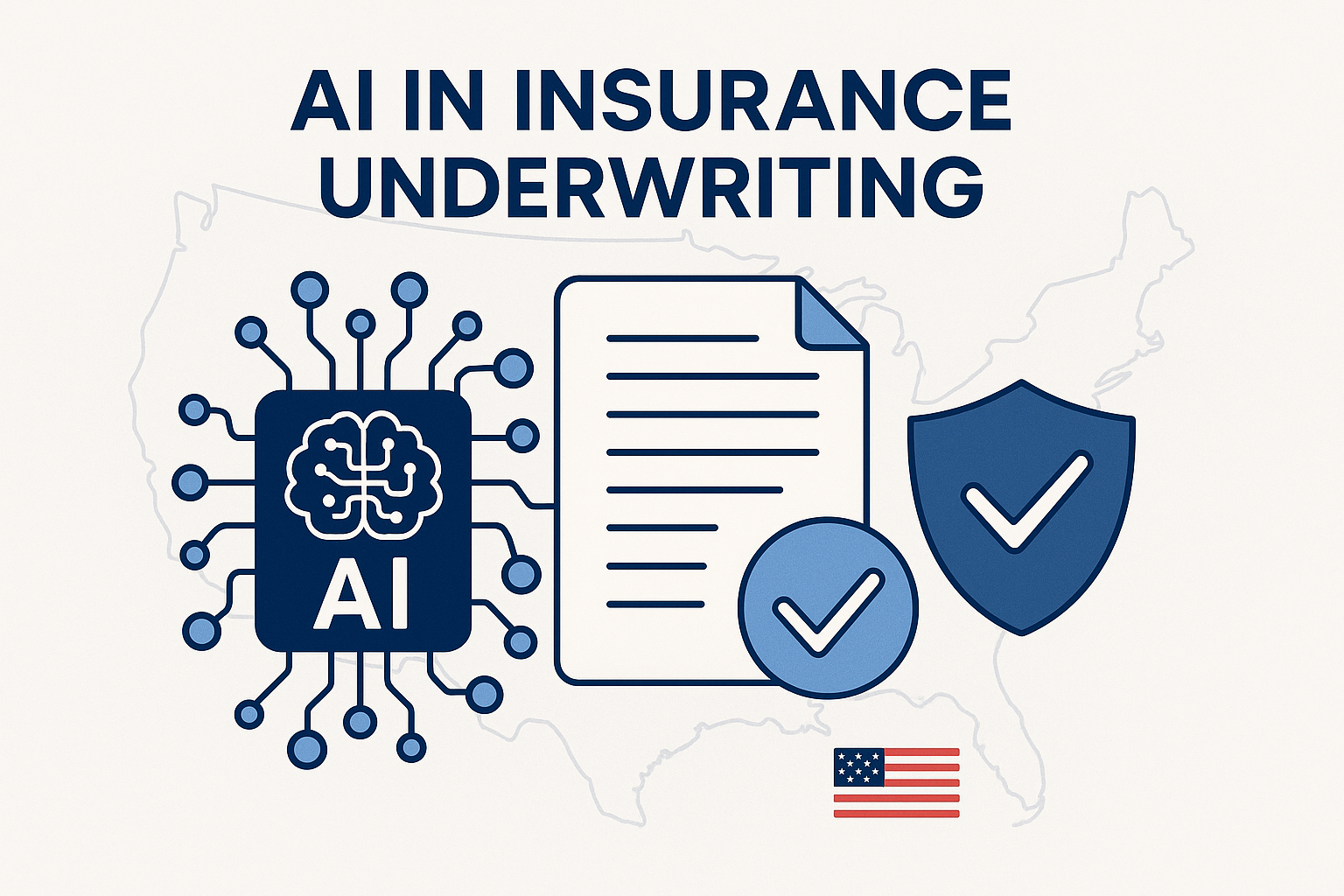
AI in Insurance Underwriting: Transforming Risk Assessment in 2025
Artificial Intelligence (AI) is revolutionizing industries across the globe, and the insurance sector is no exception. In 2025, AI in insurance underwriting has become a game-changer, streamlining processes, reducing costs, and enhancing accuracy. This comprehensive guide explores how AI is reshaping underwriting, the benefits and challenges, and what U.S. insurers need to know to stay ahead.
Understanding AI in Insurance Underwriting
Insurance underwriting is the process of evaluating risk and determining appropriate premiums for policyholders. Traditionally, this has been a manual, time-consuming task. With the integration of AI, underwriters now leverage advanced algorithms, machine learning, and data analytics to make faster and more informed decisions.
What Does AI Bring to Insurance Underwriting?
- 📊 Data-Driven Decisions: AI analyzes vast datasets, including non-traditional sources like social media and IoT devices.
- ⚡ Speed and Efficiency: Automated systems process applications in seconds, reducing turnaround times.
- 🏥 Improved Risk Assessment: Machine learning models identify patterns and predict risks more accurately than manual methods.
- 💡 Personalized Policies: AI enables insurers to tailor products to individual customer profiles.
Top 10 Benefits of AI in Insurance Underwriting (2025)
AI adoption in underwriting offers numerous advantages. Here are the top 10 benefits ranked for U.S. insurers in 2025:
- Faster Application Processing
- Enhanced Risk Prediction
- Reduced Operational Costs
- Improved Fraud Detection
- Greater Underwriting Accuracy
- Personalized Customer Experiences
- Scalability for Growing Portfolios
- Regulatory Compliance Automation
- Continuous Learning and Improvement
- Better Claims Management Integration
Side-by-Side Comparison Table
| Rank | Benefit | Impact on Underwriting |
|---|---|---|
| 1 | Faster Application Processing | Reduces time from days to minutes |
| 2 | Enhanced Risk Prediction | Lowers loss ratios, improves pricing |
| 3 | Reduced Operational Costs | Cuts manual labor, increases ROI |
| 4 | Improved Fraud Detection | Identifies anomalies in real-time |
| 5 | Greater Underwriting Accuracy | Minimizes human error |
| 6 | Personalized Experiences | Boosts customer satisfaction |
| 7 | Scalability | Handles higher application volumes |
| 8 | Compliance Automation | Ensures adherence to U.S. regulations |
| 9 | Continuous Learning | Adapts to new risks and data |
| 10 | Claims Management Integration | Streamlines end-to-end processes |
TIP: Embracing AI in underwriting not only boosts efficiency but also strengthens your competitive edge in the U.S. insurance market.
How AI Works in Modern Insurance Underwriting
AI-driven underwriting platforms utilize several advanced technologies:
1. Machine Learning Algorithms
AI models are trained on historical claims, policyholder data, and external datasets to predict risk more accurately.
import pandas as pd
from sklearn.ensemble import RandomForestClassifier
# Example: Predicting insurance risk
data = pd.read_csv('underwriting_data.csv')
X = data.drop('risk_level', axis=1)
y = data['risk_level']
model = RandomForestClassifier()
model.fit(X, y)
2. Natural Language Processing (NLP)
NLP extracts relevant information from unstructured documents, such as medical records or customer emails.
from transformers import pipeline
nlp = pipeline("ner")
text = "Applicant has a history of hypertension and diabetes."
entities = nlp(text)
print(entities)
3. Predictive Analytics
AI systems forecast future claims and losses, enabling proactive risk management.
4. Robotic Process Automation (RPA)
RPA bots automate repetitive tasks, such as data entry and document verification.
Key Use Cases for AI in U.S. Insurance Underwriting (2025)
Automated Risk Assessment
AI evaluates applicant data, credit scores, and lifestyle factors to assign risk levels instantly.
Fraud Detection
Machine learning models flag suspicious patterns, reducing fraudulent claims and payouts.
Dynamic Pricing
AI enables real-time premium adjustments based on changing risk profiles and market conditions.
Customer Segmentation
Insurers use AI to segment customers and offer tailored products, improving retention and satisfaction.
Challenges and Considerations for AI in Insurance Underwriting
While the benefits are substantial, U.S. insurers must navigate several challenges:
- 🔒 Data Privacy and Security: Handling sensitive customer data requires robust cybersecurity measures.
- ⚖️ Regulatory Compliance: AI systems must comply with evolving U.S. insurance regulations.
- 🤖 Algorithmic Bias: Ensuring fairness and transparency in AI decision-making is critical.
- 👩💼 Human Oversight: Underwriters must validate AI recommendations to maintain trust and accountability.
TIP: Regularly audit AI models and involve human experts to mitigate risks of bias and ensure compliance.
The Future of AI in Insurance Underwriting: Trends for 2025 and Beyond
- Explainable AI (XAI): Insurers are investing in transparent AI models to justify underwriting decisions.
- Integration with IoT: Wearables and connected devices provide real-time data for more accurate risk assessment.
- Continuous Model Training: AI systems are updated with new data to adapt to emerging risks and regulations.
- Customer-Centric Underwriting: AI enables hyper-personalized policies and seamless digital experiences.
Conclusion
AI in insurance underwriting is transforming the way U.S. insurers assess risk, process applications, and serve customers in 2025. By leveraging machine learning, NLP, predictive analytics, and automation, insurers achieve faster, more accurate, and cost-effective underwriting. The top benefits include enhanced risk prediction, reduced costs, improved fraud detection, and personalized customer experiences.
However, successful AI adoption requires addressing challenges such as data privacy, regulatory compliance, and algorithmic bias. By combining advanced AI technologies with human expertise and robust governance, insurers can unlock the full potential of AI in underwriting—driving growth, innovation, and customer trust in the evolving U.S. insurance landscape.